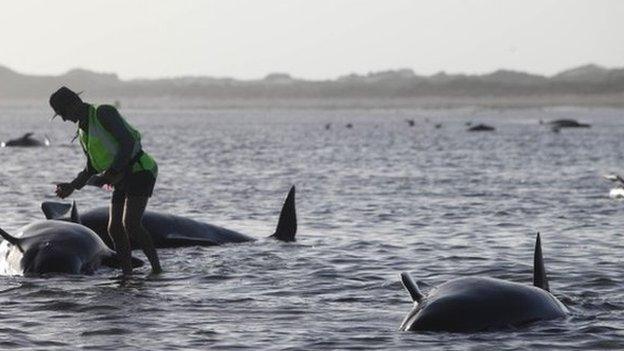New Zealand whales: Authorities to move 300 carcasses
- Published
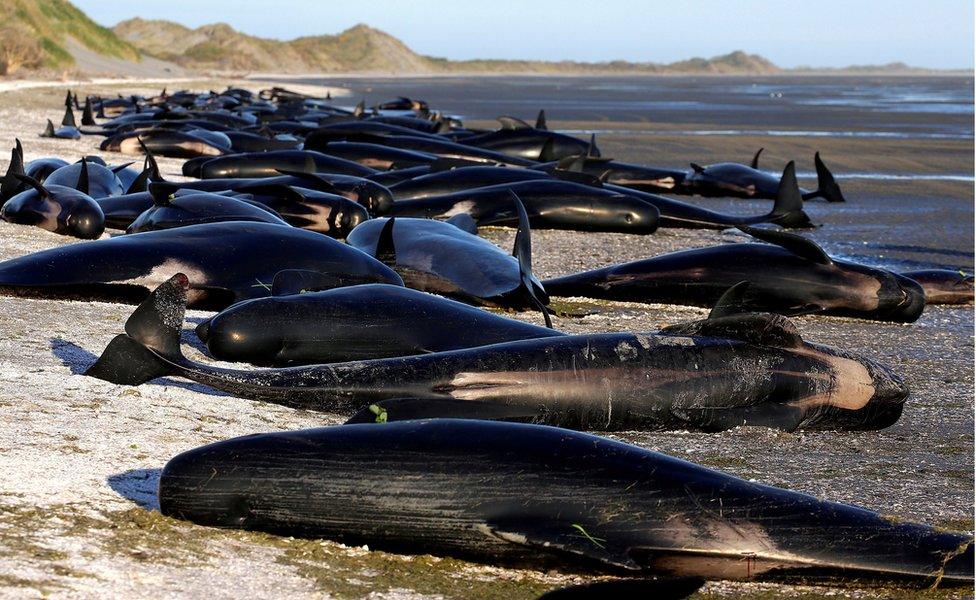
Beached whales were marked with an "X" to indicate they had died
New Zealand authorities have said they will move the carcasses of hundreds of whales that died in a mass stranding to an area not open to the public.
About 300 whales will be moved with a digger and buried in the sand dunes further up Farewell Spit, South Island.
On Monday, conservation workers pierced the bodies to release gas built up during decomposition, following warnings the carcasses might explode.
Thursday's stranding was one of the country's worst.
It is not clear why more than 400 pilot whales - which are technically members of the dolphin family - came ashore last week, but since then more have stranded themselves including about 200 on Saturday.
The 200 were mostly refloated, but Department of Conservation, external (DOC) official Trish Grant told the BBC on Monday that the pod was still dangerously close to the beach and the whales could strand themselves again.
"We have staff in a boat offshore because there is a risk they could re-strand," she said.

The carcasses will be moved to an area of dunes further up Farewell Spit
How will the dead whales be moved?
Diggers will be used to move the hundreds of heavy carcasses to an area of sand dunes in a part of the local nature reserve that is not normally open to the general public.
The DOC originally considered leaving the carcasses where they were, with fences around them, but decided it would be better to keep the rotting bodies away from the public.
"It's a big job" admitted the DOC's Trish Grant, adding that it would take a few days as the bodies can only be moved at low tide.
Workers in protective clothing have spent Monday morning cutting holes in whale carcasses with knives and long needles to prevent them from exploding because of gas build-up.

Volunteers have been forming human chains in the water to deter whales from stranding
Why do they keep beaching?
No-one knows for sure.
One theory is that they may have been driven on to land by sharks, after bite marks were found on one of the dead whales. But the shape of the coastline and its shallow tidal waters has also been cited as likely factors.
The DOC's Herb Christophers earlier told the BBC that the whales were trying to get around the top of South Island, but if their navigation went wrong they ended up on the beach.
In the shallow waters, the animals' use of echo location was impaired. "It's a very difficult place if you get lost in there and you are a whale," he said.
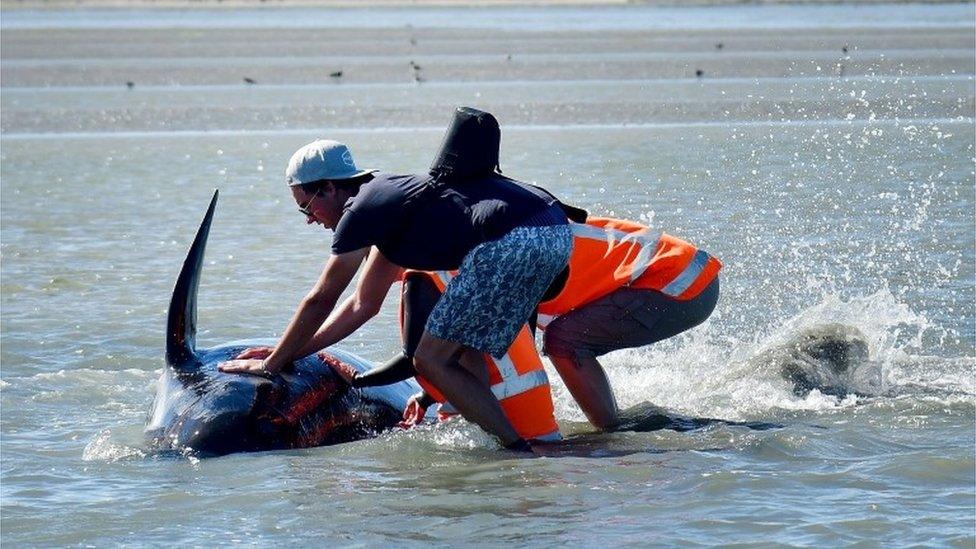
Many volunteers arrived to help conservation officials with rescue efforts over the weekend
Experts say that whales that become beached also send out distress signals, attracting other members of their pod, who may then also get stranded.
Sometimes stranded whales are old, sick, or injured.
Has this happened before?
New Zealand has one of the highest stranding rates in the world. About 300 dolphins and whales end up on beaches in the country every year, according to Project Jonah., external
Many of these incidents happen at Farewell Spit. In February 2015 about 200 whales beached themselves at the same location, of which at least half died.
Even so, the beaching of more than 600 whales on the 5km-long (three mile-long) stretch next to Golden Bay, of which around 300 died, is one of the worst such incidents in New Zealand's history.
- Published12 February 2017
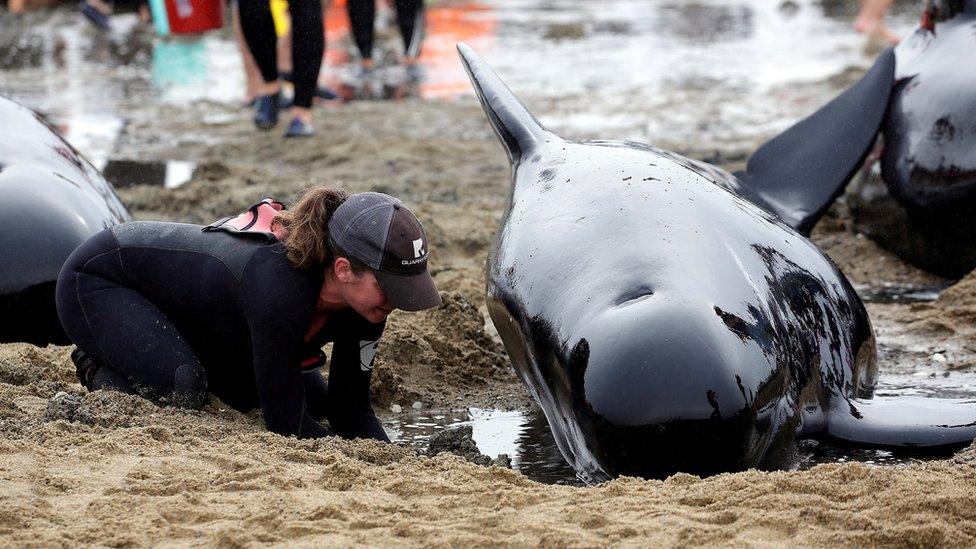
- Published11 February 2017
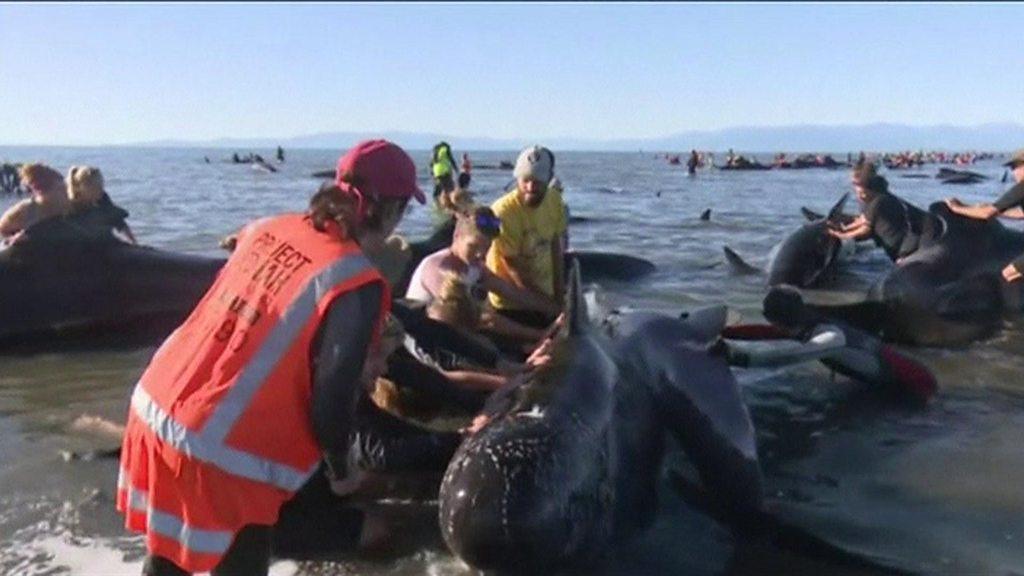
- Published7 October 2016
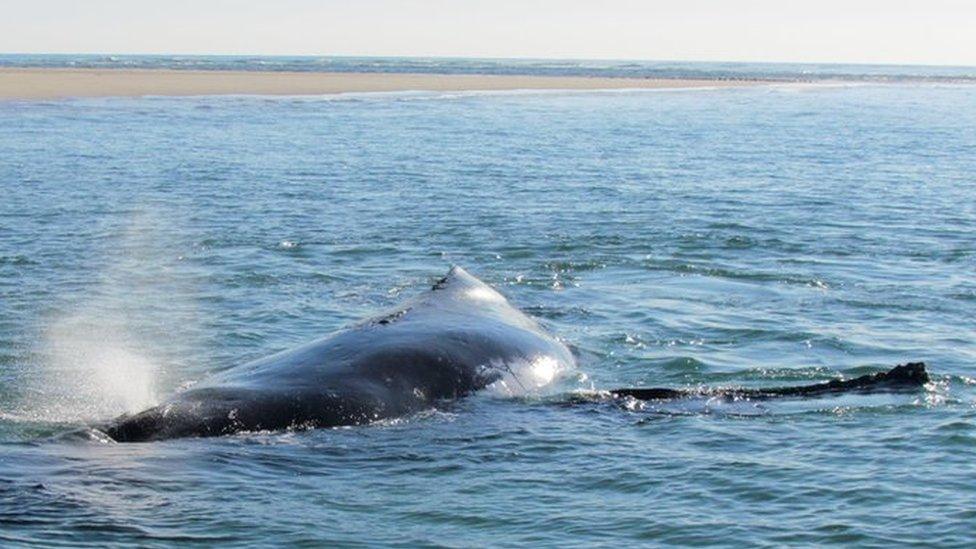
- Published14 February 2015
